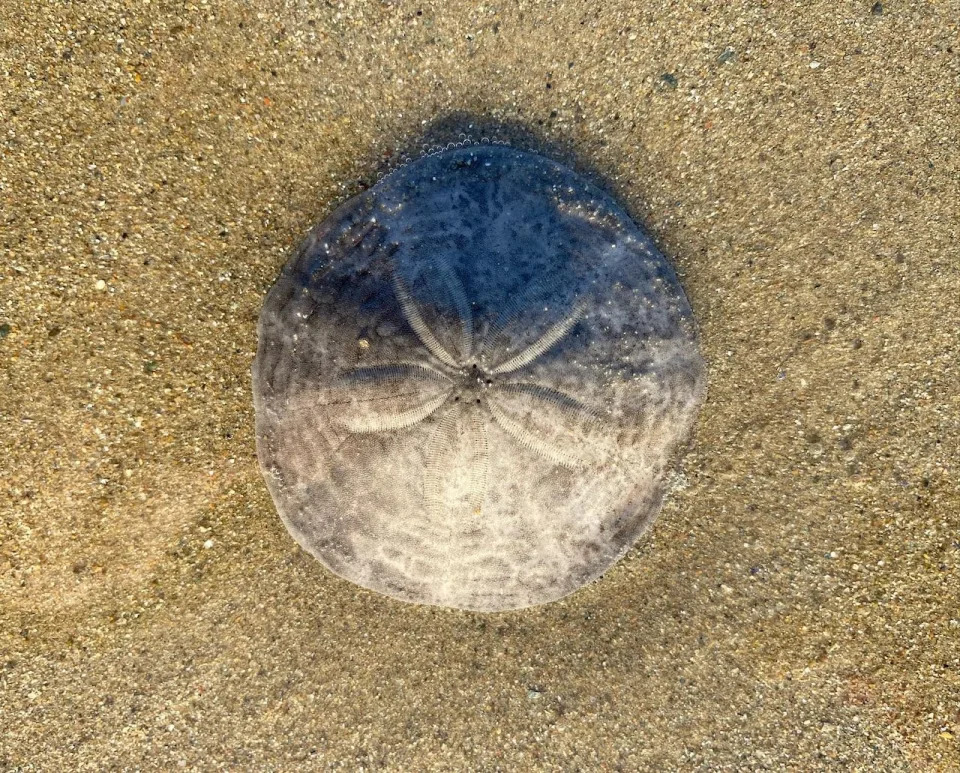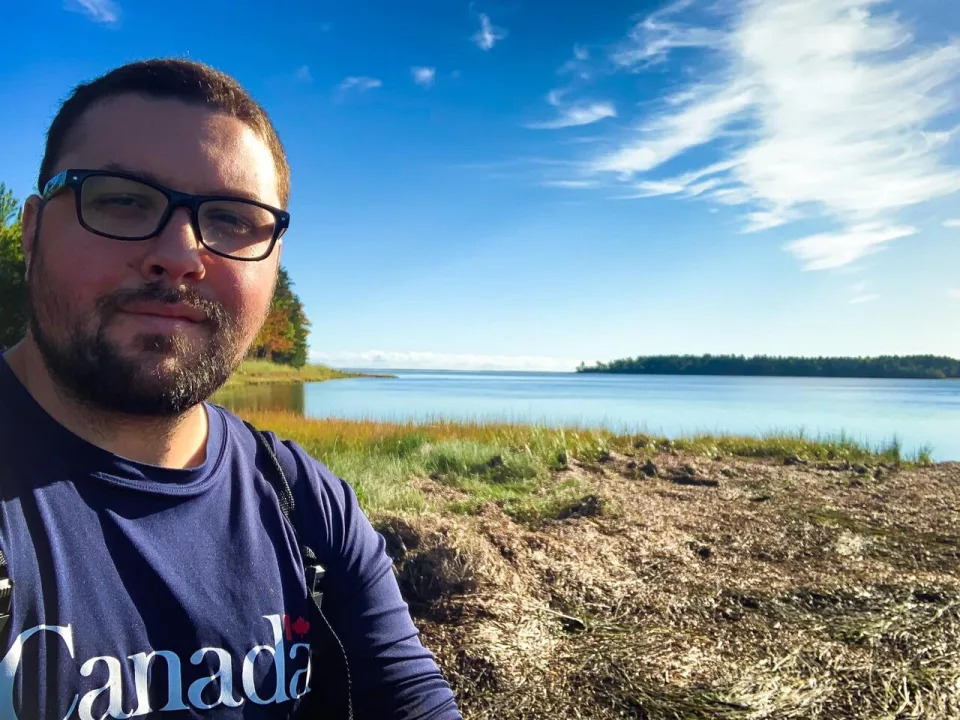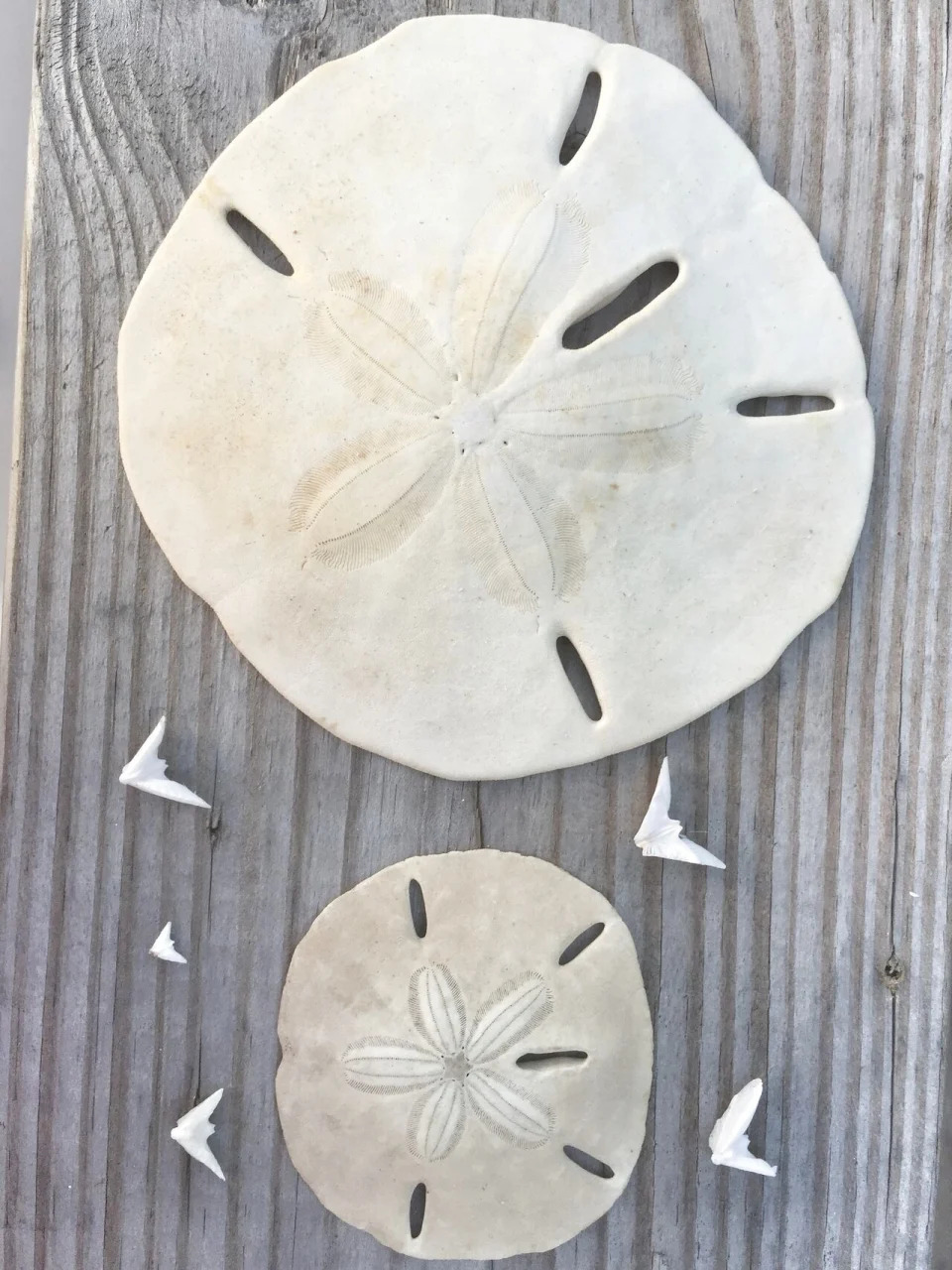CBC
Sun, August 27, 2023

Sand dollars look much different when they're alive in the water compared to when they're dried out in the sand. (Submitted by Andrea Hanson - image credit)
There's much folklore surrounding the small, fragile creatures known as sand dollars, but what is their life like before they wash up on the shore?
Jeff Clements, an aquatic biologist with Fisheries and Oceans Canada, says the critter's coin-like appearance has led to many myths about the marine animal.
"Coins to humans are quite valuable, and so sand dollars are often captured in cultural folklore," said Clements. "For example, some people believe that dead sand dollars that you find on the beach are the coins lost by mermaids or the people of Atlantis."
Sand dollars look much different when they're alive in the water compared to when they're dried out in the sand.
When alive, they are reddish or purple in colour. In the water, they look more like small, flattened cookies rather than coins.
That's why they're sometimes called sea cookies or sea biscuits.
The creatures have thousands of short spines that move in all directions, Clements said.
Dead sand dollars are typically chalky white or tan, and have no spines. These dried-up sand dollars have a flower pattern on them.
Clements said that flower will always have five petals. The reason why they have this pattern? Sand dollars are echinoderms, a group of marine invertebrates that includes sea urchins and starfish.
Echinoderm bodies are radially symmetrical about a central point, just like a four-leaf clover — except that sand dollars have a five-fold symmetry.
There are many different species of sand dollars, but the scientific name for the ones found in the Maritimes is Echinarachnius parma.
Where to search for sand dollars
Dried-up sand dollars often wash up on sandy parts of the beach, but live ones live just beneath the sediment surface on the ocean floor.
When walking on tidal flats at low tide, you may be lucky enough to find a live one. Clements recommends digging just beneath the sediment, usually at the spot where the water meets the emerged sand.
If you're extra lucky, you might catch a glimpse of a sand dollar moving slowly just beneath the surface. Sand dollars feed on little bits of algae or other organic matter in the sediment, Clements said.

Jeff Clements is an aquatic biologist with Fisheries and Oceans Canada. He's based in Moncton, N.B. 'Coins to humans are quite valuable, and so sand dollars are often captured in cultural folklore,' says Jeff Clements, an aquatic biologist with Fisheries and Oceans Canada. (Submitted by Jeff Clements)
"Sometimes, they'll actually bury one side of their body into the sand — about half of their body — and tilt it upright," he said.
"They can extend their spines, which have these little hairs lining each spine, and capture organic matter or little bits of food that are floating around in the water."
If you end up picking up one of these creatures, be prepared to giggle.
"They might tickle you if you pick them up and put them in your palm," Clements said.
Sand dollars move around with thousands of little "tube feet" that they extend and retract by pumping water in and out of them, Clements said. These feet have little suction cups on their tips that stick to surfaces.
Coupled with the simultaneous movement of its spines, a live sand dollar is sure to give you a tickle.
Hidden treasure inside
If you crack open a dead sand dollar, there will be a special surprise waiting inside: little white trinkets that look like birds. Some people call them sand dollar doves, Clements said.
These bird-like tokens are actually the dried-up mouth parts of the sand dollar. Again, because of the five-fold symmetry of the creatures, a dead sand dollar will have five "doves" inside.
"For some people, these have spiritual significance and certainly culturally they're quite important in some regions," Clements said.

Sand dollars I found on a beach in Galveston Texas and the middle dove Pisces;
If you crack open a dead sand dollar, there will be a special surprise waiting inside: little white trinkets that look like birds. Some people call them sand dollar doves.
(Shaunda Roberts/Shutterstock)
Despite the treasured nature of sand dollars, humans may be harming these aquatic creatures.
Clements said there is some research that suggests warming ocean temperatures may affect sand dollar reproduction.
Because sand dollar skeletons — called "tests" — are made of calcium carbonate, the animal is also vulnerable to the effects of ocean acidification, as acidic seawater can dissolve calcium carbonate.
Despite the treasured nature of sand dollars, humans may be harming these aquatic creatures.
Clements said there is some research that suggests warming ocean temperatures may affect sand dollar reproduction.
Because sand dollar skeletons — called "tests" — are made of calcium carbonate, the animal is also vulnerable to the effects of ocean acidification, as acidic seawater can dissolve calcium carbonate.
No comments:
Post a Comment